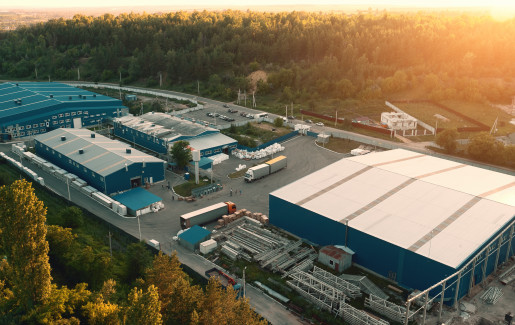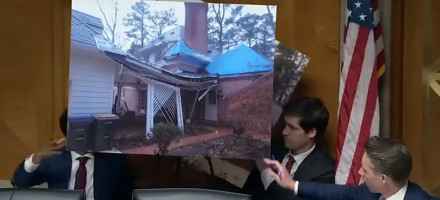Engineering a Comeback: Rebuilding a Manufacturing Facility
In a quiet industrial district in Michigan, an unforeseen explosion occurred at a manufacturing facility, resulting in extensive structural damage and halting its operations. In response, the insurance company, assessing the extensive damage, advocated for a conservative repair approach, a stance that seemed to overlook the depth and breadth of damage, thus understating the necessity for a more expansive and detailed restoration plan
Description
In a quiet industrial district in Michigan, an unforeseen explosion occurred at a manufacturing facility, resulting in extensive structural damage and halting its operations. In response, the insurance company, assessing the extensive damage, advocated for a conservative repair approach, a stance that seemed to overlook the depth and breadth of damage, thus understating the necessity for a more expansive and detailed restoration plan.
In the aftermath of the explosion, the manufacturing facility faced a stark reality of destruction. The blast had demolished an entire wall, leading to structural compromises throughout the building, including cracks in the masonry and damage to the roof. Additionally, the activation of the sprinkler system in response to the fire caused water damage to both the sophisticated equipment and the interior of the facility.
Issues
1. Underestimation of Structural Integrity Concerns:
Initial assessments by the insurance company’s consultants significantly undervalued the structural impact of the explosion, neglecting critical issues such as foundational hairline cracks and compromised roof integrity. This miscalculation led to preliminary estimates that were substantially lower than required, overlooking the necessity for extensive reconstruction to ensure long-term structural stability.
2. Contentious Equipment Damage Assessment:
The insurance company proposed a minimalistic repair approach for water-damaged equipment, including key electrical and manufacturing systems. In contrast, the facility advocated for full replacements, citing the high precision and complex nature of their operational machinery. Disputes particularly centered around specialized equipment like injection mold machines,
with the insurance provider underestimating the logistical and financial implications of comprehensive repairs, as well as the potential decline in operational precision.
3. Discrepancies in Business Interruption Valuation:
The insurance provider’s projections for lost income were based on significantly lower figures, failing to accurately reflect the unique operational model of the facility’s prototype manufacturing. This method did not adequately account for the variable income patterns inherent to the facility’s high-value, low-volume production, leading to a substantial undervaluation of
the business interruption impact.
4. Complexity in Salvage Rights Negotiations:
The settlement process was intricately complicated by discussions surrounding salvage rights, especially regarding equipment deemed repairable by the insurance company. This entailed nuanced deliberations over the valuation of repaired versus replaced equipment and the facility’s right to retain and potentially utilize or sell the salvaged items. These discussions demanded a strategic approach to maximize recovery while retaining the flexibility to manage salvaged assets, adding a sophisticated layer to the overall settlement negotiations.
Solutions Applied
Comprehensive Damage Reassessment:
Our firm initiated a thorough reassessment of the damage, engaging independent structural engineers and industry experts to provide a more accurate picture of the extent and nature of the damages. This comprehensive analysis by our team highlighted overlooked aspects, such as the need for full-scale equipment replacements and structural reinforcements, leading to a more realistic estimation of repair costs.
Strategic Equipment Valuation and Replacement Solutions:
Through detailed evaluations and negotiations, our adjusters demonstrated the inadequacy of simple repairs for high-precision machinery affected by water damage, advocating for complete replacement where necessary. Our approach involved bringing in technical experts and conducting cost-benefit analyses, which provided compelling evidence that many pieces of equipment were beyond repair. This effort ensured that the facility was equipped with state-of-the-art machinery, vital for maintaining the high standards of precision and efficiency required in their manufacturing processes.
Business Interruption Claim Advocacy:
We effectively contested the insurance company’s low projections for the business interruption claim, using detailed financial analyses and projections based on the facility’s unique prototype production model. Our nuanced understanding of the facility’s operational cycles and potential growth trajectories ensured that the business interruption claim accurately reflected the true economic impact of the incident.
Salvage Rights Optimization:
In the complex negotiations around salvage rights, our experts adeptly navigated the valuation and potential use of the damaged equipment, striking a balance between financial recovery and operational pragmatism. This strategy not only secured fair compensation for the salvaged assets but also provided the facility with additional operational options post-recovery.
Outcome
After extensive negotiations and detailed reassessments, the manufacturing facility not only secured a comprehensive settlement that fully addressed their extensive structural and equipment damages but also emerged stronger post-recovery. The settlement, covering necessary repairs and replacements, went beyond mere compensation by facilitating upgrades with state-of-the-art equipment, enhancing operational efficiency. Additionally, it provided ample compensation for business interruption and extra expenses, catalyzing the facility’s swift and robust recovery and positioning it for greater productivity and resilience in the future.



